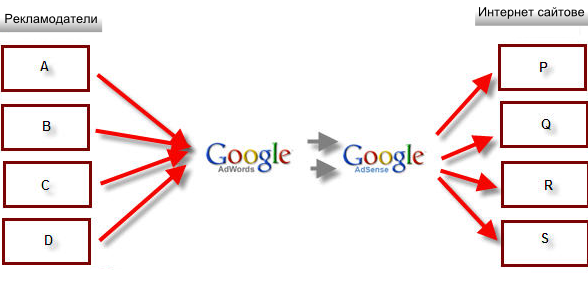Ivan Petkov
I talked about the basics of Internet advertising last week. I hope I've managed to explain clearly the most important concepts, without which we can not analyse and explain what online advertising is, how it works and what models it follows. To get more deeply into the global advertising network, I have decided to present to you Google AdWords - an advertising service based on the largest online advertising network in the world. While introducing Google AdWords, I will present some new basic concepts that complement the picture of what advertising on the Internet is.
Let's start with this: what is an ad network? Obviously, as it is a network, it will make connections - the connections an ad network makes are nothing else but websites or webpages that can display your ad or banner which I explained in the previous article. If you remember, the websites or the individual webpages have advertising positions, in which different banners can be placed. The advertising network provides each advertiser with the ability to make advertising campaigns and direct its advertisements to a specific range of users by linking numerous websites. I have used so far all the terms that I explained last time. If you have forgotten them, you can take a look here.
The Google advertising network has two main services through which it connects advertisers with the websites on which to place their ads. Google is the mediator between the two parties in this process. These two services are Google AdWords and Google AdSense.

Broadly speaking, AdWords is in the beginning of the ad network and enables advertisers to upload their advertisements and determine on which sites they will appear and for what amount. We will talk about Google AdSense in our next articles, so we will leave it aside for now.
How has Google managed to become so popular and to gain the online advertising market? The answer is simple – it enabled any of the parties - advertisers and websites – quickly and easily to join their ad network. And something very important – it has managed to impose the text ads and the pay per click system (PPC = pay per click).
Now I will explain what this means. You have probably come across an ad on the Google network. It looks like this:

Each ad consists of several elements:
Title: The first line of the ad acts as a link to the website of the advertised product or service and as the ad title at the same time.
Text lines: These two lines are used to describe the product or service being advertised. Only the basic information and advantages of the product or service should be described since the space in the advertisement is limited
Displayed URL: The last line (the green text) is used to display the address of the website that promotes the advertised product or where it is placed (sold). The aim of the displayed URL is to give users a clear idea which website they will open when they click on the ad.
The advantage of text ads is their unobtrusiveness, which may sound strange, because the purpose of any advertisement is to be noticed! The problem that I pointed out before is that the too colourful and attractive ad that snaps, sounds and draws the user attention, is original and funny at first but when several of these ads are combined and the user sees them everywhere online, they become annoying, impede the content searching and users ignore them and even try to hide them. In practice, it appears that text ads are very well accepted and although they are not so impressive and attractive, they attract significant user interest.
The second major reason for its popularity is the good focus on users (ad targeting). Google has developed the mechanisms by which the ad appears on pages that have similar content related to the contents of the ad. For example, if you read an article about healthy eating, then Google ads for diets, health food, etc. will appear on the same page.
The third major reason for the success of the text ads is the method of payment. Google AdWords imposed the pay per click or PPC (pay per click) as it is known. This means that advertisers pay for their ad display to the website, to Google as the intermediary, and to the service provider only if some user clicks the ad. There is no payment if nobody clicks the ad no matter how often it is displayed on the page.
Why is this advantage great? Let us imagine that we have a product, for example, we sell books and have a website for selling them. For us, as site owners, the most important thing will be to bring the largest possible number of users and some of them to buy books from our website. It is not important for us how many times our ad is seen but how many people have come to our site, because without visitors, there will be no sales!
Of course, Google provides an opportunity for other payment methods and other ads, but we will talk about them the next time.
To summarize the most important things to remember:
1. The ad network brings together websites where each advertiser can place his/her ad (banner);